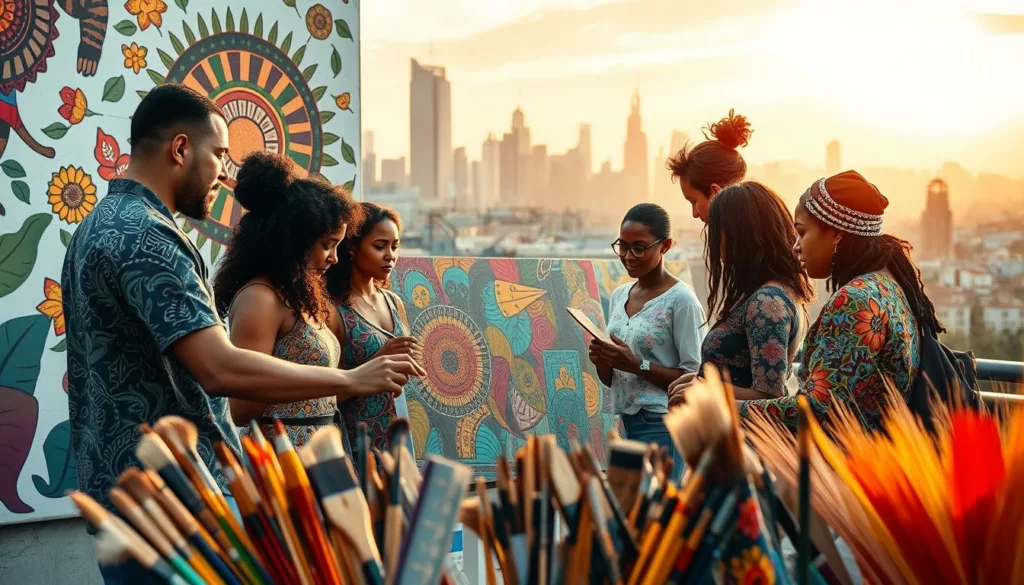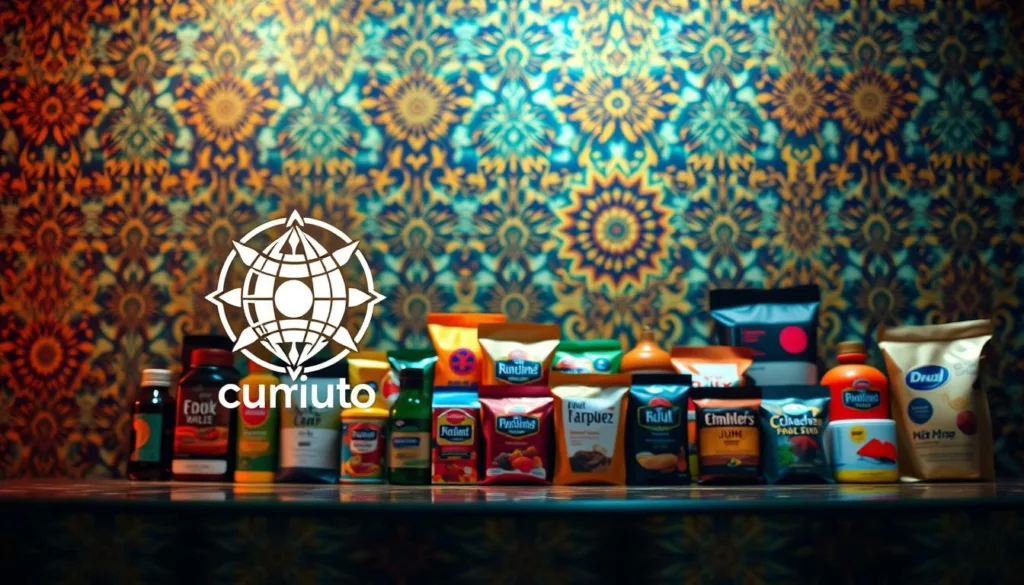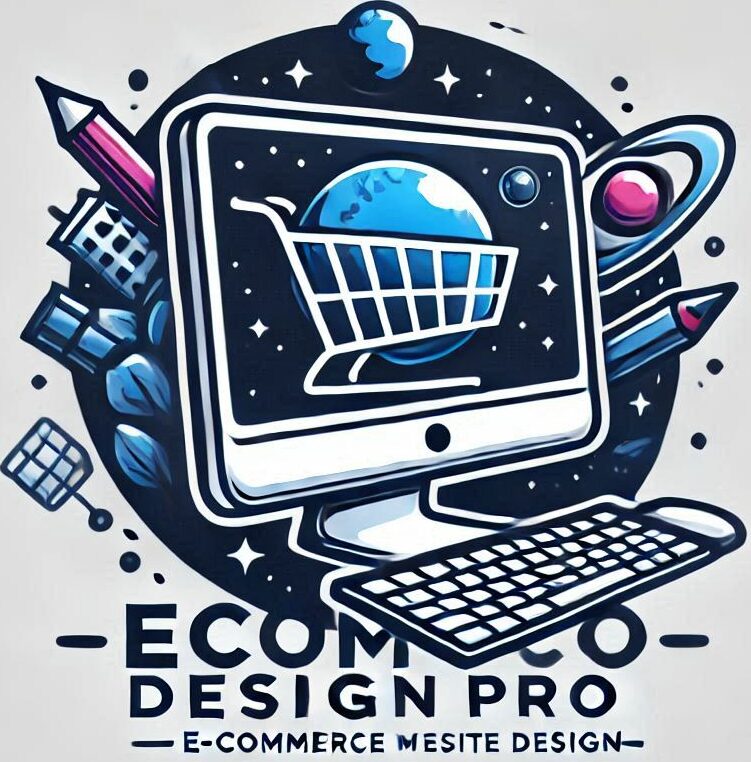
Good store graphics communicate fast. They shape how an audience reads a brand, feels trust, and decides to act. In a diverse U.S. market and an interconnected world, cultural context changes how colors, materials, and forms are read.
This guide shows why cultural sensitivity matters for branding and performance. Examples range from Japanese simplicity and Scandinavian function to African pattern traditions and Bauhaus minimalism. Real work by Malika Favre, Sawdust, and collaborations like Nike’s Maasai-inspired Huarache line prove hybrid approaches can be authentic and effective.
Designers will get a practical, ethical process to plan, test, and launch store visuals that resonate across audiences without stereotyping. Expect methods for research, co-creation with local experts, color and symbol nuance, localization, and governance to prevent mistakes.
Outcome: a repeatable workflow to scope, validate, and deploy store designs that respect culture and boost results.
Key Takeaways
- Culture shapes color, form, and material choices that affect how audiences respond.
- Respectful co-creation with local experts boosts authenticity and performance.
- Test and localize early to avoid costly cultural missteps.
- Clear governance and ethical rules help designers balance inspiration and appropriation.
- Following best practices improves trust, comprehension, and branding outcomes.
Why Cultural Sensitivity Matters in Today’s U.S. Market
As the U.S. moves toward a majority-minority population, store visuals must speak to many backgrounds.
The present landscape: Designing for a majority-minority future
The Pew Research Center projects the U.S. will be majority-minority by 2045. That shift means teams must plan for diversity from day one.
One-size-fits-all visuals fail when users expect acknowledgment of different values, languages, and color preferences.
From inclusivity to impact: Trust, resonance, and market reach
Inclusive visuals increase comprehension, trust, and conversion across varied audiences. Brands that adapt symbols and identity cues gain attention and loyalty.
- Insensitive work damages trust and sales — H&M’s 2018 hoodie is a notable example.
- Attentive efforts can build respect — Google’s Juneteenth 2020 Doodle involved a Black artist.
- Platforms scale localization to win markets: Airbnb supports 60+ languages; Amazon adapts festive themes; Google tailors results.
Guardrails matter. Acknowledge past harms, set review gates, and test concepts with community experts. Doing so turns inclusivity from a checkbox into a measurable brand advantage.
Audience Research First: Foundations for Designs That Resonate
Start by mapping who your customers are and how their lived traditions shape visual reading.
Map cultural backgrounds, values, and behaviors across priority segments to see how different backgrounds interpret color, symbol, typography, and composition.
Methods: Interviews, community input, and localized market research
Use mixed-method research: interviews, moderated sessions, and advisory boards to capture lived experiences and subtle preferences.
Layer in market research to spot language expectations, idioms, holiday moments, and sensitivity triggers that affect acceptance of content.
Co-creation: Collaborate with diverse teams and community experts
Partner with local artists, cultural historians, and community experts to validate elements and flag missteps early. Nike’s Huarache Sabuku work shows how engaging Kenya-based creatives honored Maasai beadwork while shaping usable visual systems.
- Translate findings into requirements: accessibility rules, imagery goals, color guardrails, and tone.
- Create a centralized knowledge base so designers, copywriters, and marketers align on audience experiences.
- Keep a feedback loop with audiences during concept reviews to refine before rollout.
Colors, Symbols, and Language: Navigating Cultural Nuances
Small shifts in hue or a single icon can alter meaning across communities. That makes color, symbols, and language core elements when planning store visuals.
Color meanings vary. For example, white often signals purity and weddings in Western contexts but can mean mourning in parts of Asia. Red reads as luck in China and as warning in other markets. Document these different meanings so teams avoid mixed messages.

Respectful use of symbols and motifs
Audit symbols and identity markers before using them. Avoid sacred or politicized motifs unless community experts advise inclusion.
Localization beyond translation
Localization must cover tone, idioms, dates, and currencies. Add right-to-left support for Arabic and Hebrew early to prevent layout issues.
- Validate typography for legibility across scripts and plan fallbacks so the message remains clear for all users.
- Treat stickers, icons, and emojis as communicative materials; test how expressive elements behave in local contexts.
- Prototype localized versions to check text expansion and symbol placement before launch.
| Element | Example | Typical meaning | Design action |
|---|---|---|---|
| White | Wedding imagery | Purity (West) / Mourning (East) | Document use cases; test with local users |
| Red | Promotional banners | Luck (China) / Warning (Global) | Adjust hue and context; avoid single-color reliance |
| Motifs | Religious patterns | Sacred or ceremonial | Consult community experts; avoid casual reuse |
| Language | Microcopy | Tone matters for trust | Localize idioms and formality; include RTL QA |
Culturally Relevant Graphic Design: Principles and Workflow
A practical process turns empathy into tested assets that perform across audiences. Keep principles simple so teams can apply them during creative work and reviews.
Core principles
Empathy, respect, representation, and context anchor every choice. Define whose identity and values the work reflects and secure consent when using cultural markers.
Phased workflow
Plan research, then extract requirements for imagery, palette, and language. Use concept reviews with stakeholders who understand local values and identity.
Build cross-cultural testing into milestones. Validate with users from priority audiences to measure comprehension, comfort, and perceived authenticity.

Validation and measurement
Track localized CTR, time on page, and qualitative feedback to show impact. Use rubrics to flag sensitivity design risks before production.
- Translate principles into checklists for designers: typography, palette, imagery, and content choices.
- Document cultural backgrounds and language constraints early to avoid rework.
- Plan iterative cycles informed by research and user tests so creating culturally sensitive updates becomes routine.
| Phase | Activity | Who | Success metric |
|---|---|---|---|
| Research | Audience interviews, market research | UX researchers, local experts | Qualitative themes; baseline trust scores |
| Concept review | Stakeholder checkpoints, community sign-off | Designers, cultural advisors | Approval rate; flagged issues |
| Testing | Cross-cultural usability and sentiment tests | Product team, test users | Localized CTR, time on page, authenticity ratings |
| Iteration | Refine assets and scale | Designers, marketing | Improved engagement and qualitative satisfaction |
Aligning Store Branding and Campaigns with Diverse Audiences
Align store campaigns with community calendars so promotions match how people celebrate and shop. Good timing and authentic visuals improve conversion and trust. Brands like Amazon create Diwali storefronts in India with tailored banners, offers, and visuals to match local shopping rhythms.

Seasonal and cultural moments: Festive customizations without tokenism
Plan early. Build a calendar of holidays that move sales and traffic. Prioritize markets where festivals shape purchasing and tailor palettes, typography accents, and materials to local taste.
Co-create with community artists and advisors. Nike’s Kenya collaboration shows how local input keeps campaigns authentic and avoids token gestures.
Imagery and models: Reflect real people, places, and experiences
Use localized photography that shows real backgrounds, ages, and abilities. Airbnb and YouTube scale regional imagery so audiences see people and places that match their expectations.
Keep core brand identity consistent while adapting elements and storytelling to local preferences and values.
| Focus | Action | Metric |
|---|---|---|
| Calendar | Map holidays by market; prioritize launches | Traffic lift; conversion |
| Creative | Local palettes, typography, materials | User feedback; authenticity score |
| People | Cast real locals; co-create shoots | Engagement; community approvals |
| Accessibility | Alt text, captions, contrast, translations | Reach; accessibility audit |
Real-World Examples and Lessons from Global Brands
Global brands show how small, local choices scale into trusted customer experiences. These examples illustrate what to localize, how to test it, and which signals show success.

Airbnb and Google: localization that feels local
Airbnb localizes prices, imagery, and UX in 60+ languages and 220+ regions so listings feel native. That operational approach builds trust at scale.
Google localizes search results by geography and language to prioritize relevance. The lesson: prioritize context over one-size-fits-all layouts.
Facebook reactions, LINE stickers, and expressive UI
Facebook iterated on reaction emojis with market tests to ensure broad comprehension. LINE’s stickers show how expressive elements can align with regional norms.
Design systems that support flexible communication perform better across users.
Amazon festive themes and material choices
Amazon creates Diwali homepages in India that pair offers with local visuals and timing. That market-specific work respects purchase rhythms and aesthetics.
Lessons from cross-cultural influence
Look to Malika Favre and Sawdust for examples of mixing heritage motifs with modern forms. Materials, colors, and symbols carry different meanings, so validate before rollout.
- What was localized: currency, images, microcopy.
- How it was tested: iterative user tests and market pilots.
- Success signals: higher conversion, trust scores, and fewer sensitivity flags.
| Example | Localized element | Result |
|---|---|---|
| Airbnb | Prices, images, language | Higher trust and bookings |
| Search relevance by region | Improved comprehension | |
| Amazon | Festival themes | Traffic and conversion lift |
“Validate symbols, colors, and materials early — what feels universal in one market can mean something else elsewhere.”
Common Pitfalls and Governance to Maintain Sensitivity
A single unchecked asset can create lasting harm to a brand’s reputation. Preventing that starts with spotting common pitfalls and building review gates into every creative sprint.
Avoid stereotypes, assumptions, and context-blind reuse
Teams often fall into three traps: stereotyping, overgeneralizing differences, and reusing assets without fresh validation. Each can lead to real harm.
Notable examples include H&M’s 2018 hoodie controversy and the Washington Redskins name and logo. These are clear reminders that failing to check context has consequences.
Set review gates: Cultural checks, language QA, and expert sign-off
Governance is practical, not punitive. Require cultural sensitivity design checks, language QA for idioms and tone, and expert sign-off for high-visibility content.
- Refresh research whenever entering a new market or updating content for sensitive moments.
- Maintain do-not-use lists for symbols, phrases, and imagery and document nuances that can flip meaning across regions.
- Train designers and copy teams on sensitivity design standards and how to request cultural consultations early.
| Risk | Mitigation | Who |
|---|---|---|
| Stereotypes | Community review & expert sign-off | Designers, advisors |
| Context reuse | Mandatory QA and market pilots | Product, localization |
| Language tone | Language QA and idiom checks | Copy, translators |
“Validate symbols, colors, and materials early — what feels universal in one market can mean something else elsewhere.”
Conclusion
When brands put community knowledge first, visuals communicate faster and with more trust. Center people and audiences so your store message reaches users across cultures and the world.
Follow a clear workflow: research, community input, localized language, color and symbol checks, cross-cultural testing, and governance to maintain sensitivity. Keep documentation and playbooks so teams reuse approved elements like typography, palette, and imagery respectfully.
Inclusive marketing is measurable. Track localized engagement, trust signals, and feedback to prove impact and iterate. With empathy, expert input, and repeatable systems, your graphic design choices will help designs resonate and serve diverse preferences without losing brand cohesion.
FAQ
What is the best first step when creating culturally relevant graphics for a retail store?
Start with audience research. Map the cultural backgrounds, values, and shopping behaviors of your customers. Use interviews, surveys, and local market data to identify preferences and avoid assumptions. This foundation guides color choices, imagery, and language that will resonate.
How do I avoid cultural missteps when using color and symbols?
Research meanings of colors and symbols in each target community before applying them. Test palettes and motifs with representatives from those groups. For example, white can signal purity in some cultures and mourning in others. When in doubt, consult cultural advisers or local designers.
When should I localize language and layout for different audiences?
Localize whenever language, idioms, or script direction affects comprehension or tone. Translate copy, adapt idioms, and accommodate right-to-left layouts for Arabic or Hebrew speakers. Small tweaks in tone and phrasing can dramatically improve trust and engagement.
How can co-creation improve design outcomes?
Collaborate with diverse team members, community leaders, and customers to co-create concepts. Their input uncovers authentic cues and prevents tokenism. Co-creation speeds validation and builds designs that reflect lived experience rather than stereotypes.
What workflow ensures designs stay respectful and effective across markets?
Implement a workflow that includes research, concept reviews with cultural reviewers, cross-cultural testing, and iterative revisions. Add review gates where language QA and expert sign-off are mandatory before launch to catch issues early.
How do major brands handle localization well?
Brands like Airbnb and Google localize by hiring local teams, adapting imagery and content to regional norms, and testing experiences with users on the ground. This approach keeps the core brand consistent while making the experience feel native.
How should imagery and casting be handled to reflect diverse customers?
Use real people who reflect your audience’s demographics, settings, and lifestyles. Avoid generic stock photos that flatten identity. Show varied ages, body types, and cultural contexts to build authentic connection and credibility.
How can I celebrate seasonal or cultural moments without being performative?
Honor context and meaning. Invest in genuine customization tied to the community—offer product assortments, stories, or events rather than superficial visuals. Collaborate with cultural partners and communicate the intent and research behind the campaign.
What metrics indicate a design is resonating across cultures?
Track engagement rates, conversion, time on page, and sentiment analysis in community feedback. Compare performance by segment and run A/B tests with localized variants. Qualitative feedback from community reviews and focus groups is also essential.
What common pitfalls should teams guard against?
Avoid stereotypes, one-size-fits-all solutions, and context-blind reuse of motifs. Prevent last-minute localization, inadequate testing, and overreliance on stock assets. Establish governance with cultural checks and expert sign-off to reduce risk.



